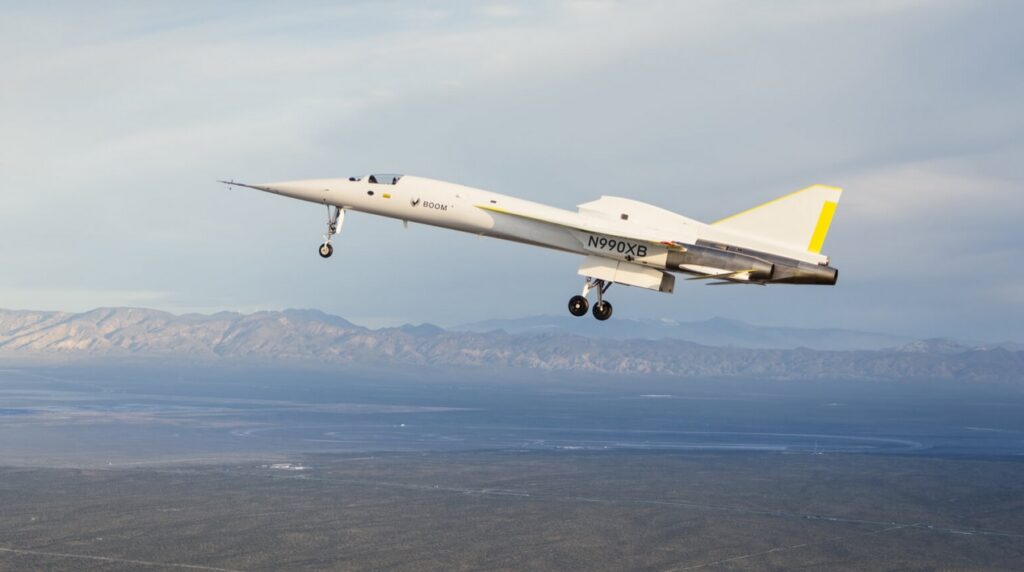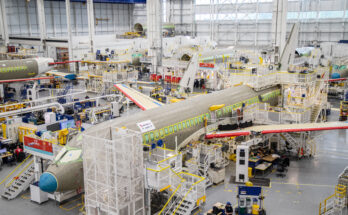
Boom Supersonic flew its XB-1 supersonic demonstrator aircraft for the first time on March 22 at the Mojave Air & Space Port. Flight testing the new demonstrator is another step on the company’s plan to develop its Overture supersonic airliner.
The Overture is designed to carry 64-80 passengers at Mach 1.7, about twice the speed of today’s airliners. Boom said the test flight met all objectives, which included achieving an altitude of 7,120 feet and speeds up to 238 knots.
Future tests of the XB-1 demonstrator will validate key technologies needed to complete development of the airliner’s design.
These include an augmented reality vision system that uses two nose-mounted cameras, digitally augmented with attitude and flight path indications, to feed a high-resolution display that will allow the pilots to see the runway without adding the weight and complexity of a movable nose.
The XB-1 is almost entirely made from carbon fiber composite materials, shaped using computational fluid dynamics simulations to find an optimized design among thousands of alternatives. Boom says that the XB-1’s engine intakes slow supersonic air to subsonic speeds, allowing the use of conventional jet engines to power the XB-1 from takeoff through supersonic flight.
Boom’s order book currently includes a back log for 130 aircraft across three customers: American Airlines, United Airlines, and Japan Airlines.
A lifelong aviation enthusiast, Douglas Royce is currently co-editor of four of Forecast International's Market Intelligence Services: Civil Aircraft Forecast, Military Aircraft Forecast, Rotorcraft Forecast, and Aviation Gas Turbine Forecast. As such, he plays a key role in many important projects that involve market sizing and forecasting for various segments of the world aerospace industry, as well as demand for related systems.




